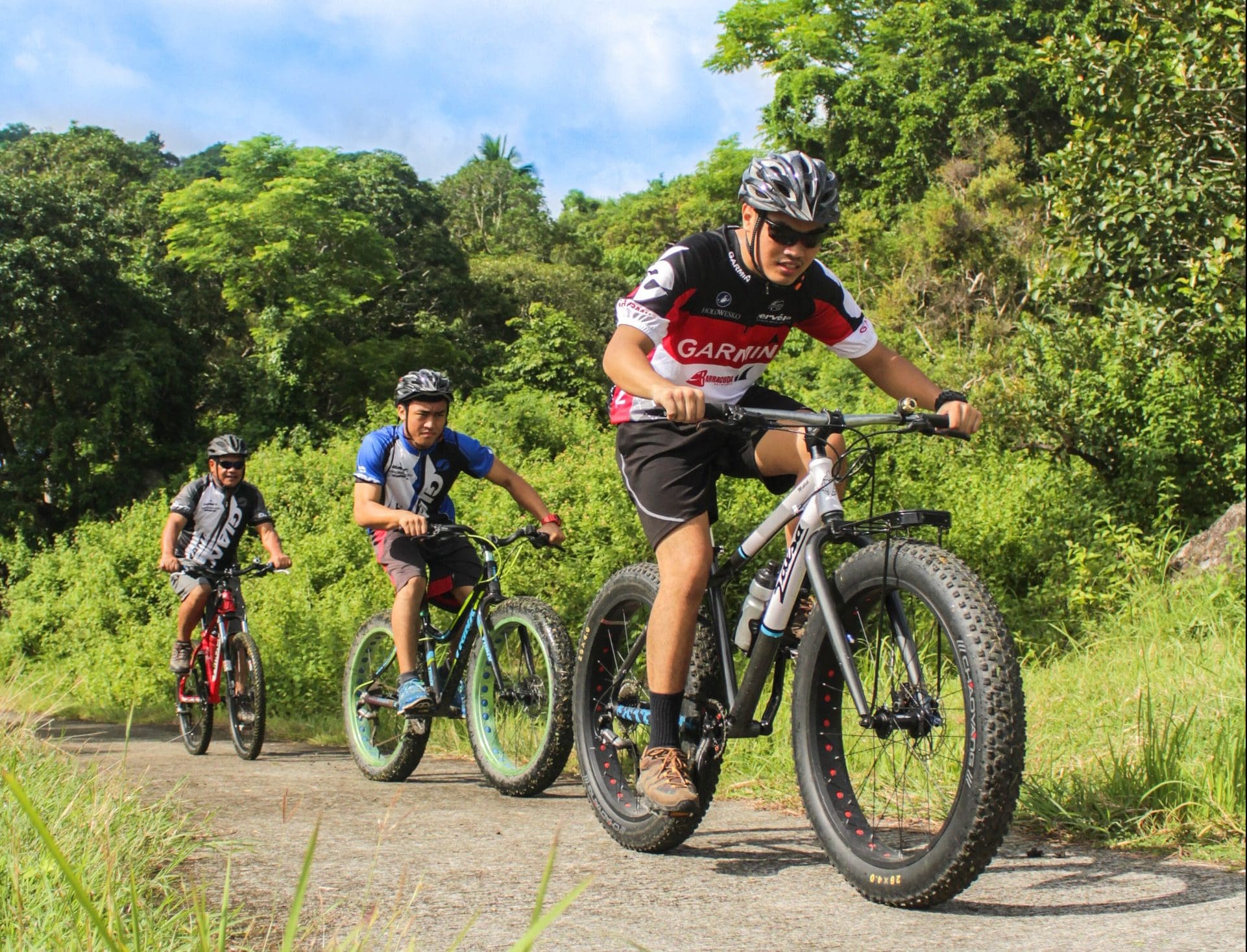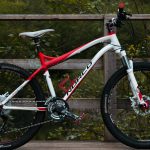Trail bikes normally have a full suspension to take the brunt of the bumps going downhill and letting you choose a fair path while not being jarred.
While it doesn’t take an expert to use a hardtail bike, it does force you to become one quicker since anytime you choose a less-than-optimal trail, you get a hard bump letting you know. In fact, many bikers use just this method to force themselves to choose better paths coming down the mountain.
Many riders specifically choose hardtail bikes with the lack of a rear suspension to force themselves to learn to ride better and avoid unnecessary obstacles on the path.
What Is A Hardtail Mountain Bike?
A hardtail mountain bike is a mountain bike that only has the front suspension fork and no rear shock.
Full suspension bikes or softtail mountain bike has the front suspension but it has a rear shock.
Why Would Someone Choose a Hardtail Mountain Bike?
There are several reasons someone would opt specifically for a hardtail mountain bike.
A hardtail bike is cheaper than a full suspension bike
More or less it’s cutting out parts which cuts down on the price. If you’re on a tight budget, then this may be the option for you.
They mostly ride smooth trails
If you ride primarily on smooth trails, then the rear shock is just not needed. And why pay for something you don’t need.
Lower maintenance
Because hardtail bikes don’t have the rear shock, there is no adjustment or maintenance needed for it. There’s no rear shock to replace if it goes bad. So in addition to lower maintenance labor and cost, there is less of a replacement cost as well.
Bike weight is a huge factor
Not having the rear shock is a weight-savings move in some cases. If you’re trying to shave off ounces of weight (or sometimes up to 3 lbs), then undoubtedly not having an entire part saves a good deal of weight. It’s minor but it exists.
What is a Hardtail Mountain Bike Good For?
Hardtail mountain bikes are unquestionably geared towards smooth ground. Hitting rough spots is not absorbed by the bike and actually results in the bike bouncing upwards and wasting momentum. So why are bikes used by choice by riders that have the option of which model to get?
Skill Development
Riding a hardtail bike down a path forces you to choose the smoothest line through the obstacles and forces you to be a more aware rider. With a full suspension you can just barrel over anything and not care about what’s on the ground.
So a hardtail bike can force you to become a more technically skilled rider because you have no choice but to guide the bike over a good path or you feel every rough patch you hit with the rigid suspension. Good or bad depends on the rider. My take is that it’s good practice where it makes sense. It you’re going over lots of rough terrain, just make it easier and use the full suspension in that case.
Efficiency
While many riders believe that a hardtail bike is more efficient because you feel more connected and it feels like it accelerates more, time and time again tests have shown the full suspension is actually a little quicker. Hardtail bikes are also lighter so it technically jumps higher and can go faster.
How Can You Make a Hardtail Mountain Bike More Comfortable To Ride?
So if you choose the hardtail mountain bike instead of a full suspension XC or trail bike due to either desire or budget, is there anything you can do to help with the ride? Actually, yes, there is.
The best hardtail mtb is still going to have a rough ride, so here are a couple of tips to make the ride a little less harsh.
Tire pressure is the key. While every rider has an idea tire pressure, letting 3-4 pounds of air out of the rear tire (not so much it affects handling) can soften the blow of bumps a little.
Take the standing position. If you crouch above the seat (it’s hard to explain) then your legs and your arms will act as the shock absorbers. This is a common position for bike riders so without even thinking about it you’ll likely do it all the same. It’s a great “ready” position to lean in either direction or such to keep your body centered.
Hardtail or Full Suspension?
So as you can see, there are a lot of very valid reasons to choose a hardtail mountain bike. If comfort is the primary goal, then a full suspension is going to be the bike for you. If you want to shave weight on the bike or hone your skills, then the hardtail is your choice of the day.
There is a third option. Some of the pro-level full suspension mountain bikes such as a trail bike or a cross country bike have a rear suspension lockout. With this, you can lockout the rear suspension and it will act like a hardtail. You won’t have many of the other hardtail benefits but if you want to hone your skills on a few runs and force feedback when you make mistakes, then this might be a great option for you.
Final Thoughts
No matter how you choose to ride and whether it’s hardtail or a full suspension and no matter how short a ride you anticipate, pack the essentials. It’s easy to have a pre-packed backpack with things like a repair kit and a first-aid kit so you’re prepared as much as possible to handle problems that may come up. I even put together a nice checklist of items to bring with you including a couple that aren’t obvious until you see them.






